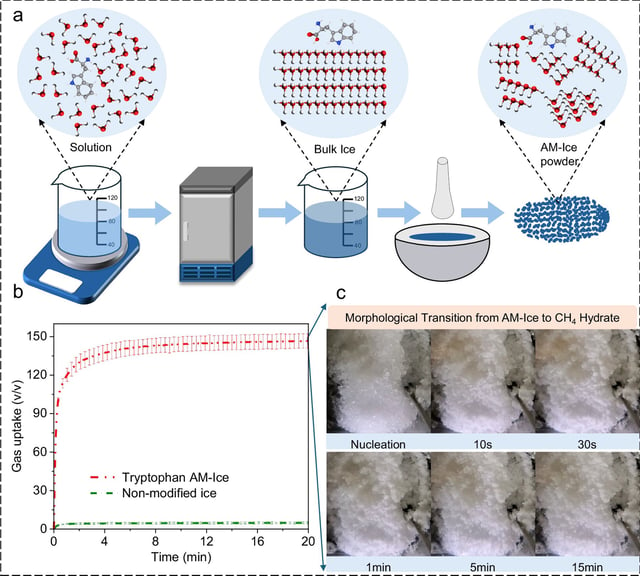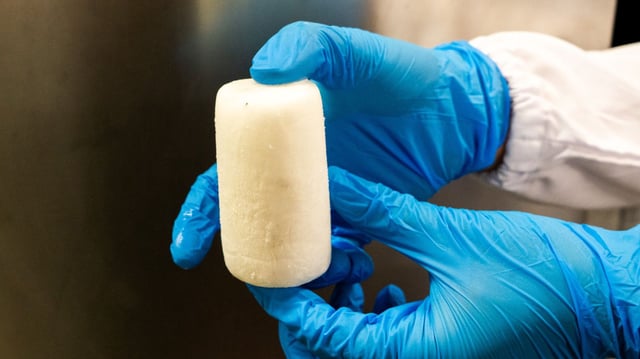Overview
- Lab tests showed about 90% of storage capacity reached in just over two minutes, holding roughly 30 times more methane than plain ice.
- Raman spectroscopy confirmed rapid filling of hydrate cages with occupancies above 90%, validating the conversion mechanism.
- Hydrophobic amino acids such as tryptophan, methionine and leucine were effective while hydrophilic types underperformed, establishing design rules.
- Methane was released on demand with gentle heating without foaming, and the solution was refrozen for repeatable charge–discharge cycles.
- Under near-freezing temperatures and moderate pressures, the material outperformed advanced porous adsorbents, with the team now targeting reactor scale-up, tests with natural gas mixtures, and exploration for gases like carbon dioxide and hydrogen.

